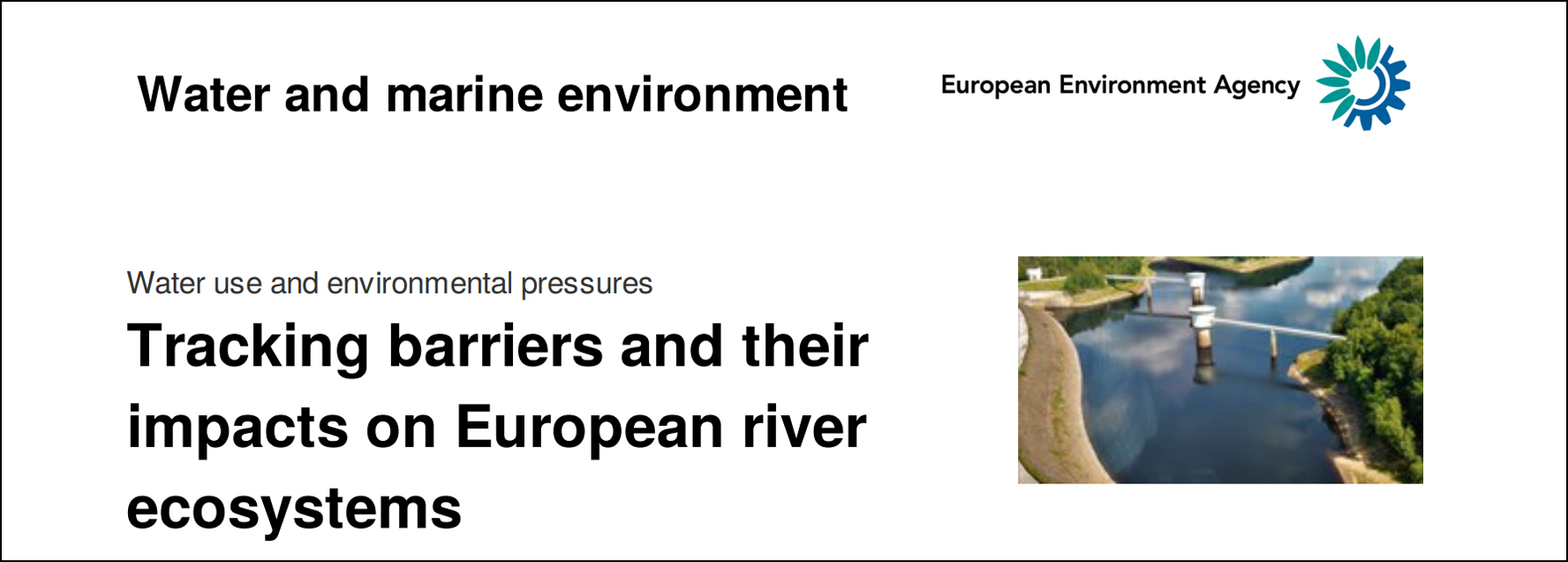EEA Briefing No 30/2020
The importance of free-flowing rivers that allow free movement of water, sediment, fish and other organisms is increasingly recognised by EU environmental policy, in particular the Water Framework Directive and the biodiversity strategy for 2030. However, the large number of barriers on our rivers has resulted in a loss of river continuity.
Impacts of barriers on river ecosystems
Healthy rivers require a high degree of continuity to support the complex life cycles of many aquatic species and a functioning ecosystem. However, for several decades, human interventions have disrupted river continuity and degraded river ecosystem functioning. Evidence from research shows that the continuity of most rivers in Europe is affected and that few free-flowing rivers remain in Europe. Barriers alter a river’s natural flow. They can block the migration routes of fish and aquatic species both up- and downstream, with habitats becoming isolated through fragmentation. Disrupted continuity affects the reproduction patterns of migratory fish, such as salmon, eel and sturgeon. The transport of sediments in rivers is also blocked by barriers. This leads to accumulation of sediment upstream and a lack of sand and gravel downstream. As a result of all these factors, ecosystems and their processes can be severely affected and the habitat of aquatic flora and fauna can be dramatically altered. In addition, the build-up of organic material and nutrients in reservoirs and in backwater from smaller dams often leads to a decrease in water quality, changes in temperature and the capacity to dissolve oxygen, and eutrophication (Gough et al., 2018).
Solutions and restorations
In several parts of Europe, restoration and mitigation measures are being implemented or planned to improve river continuity and address the impacts of barriers. Common measures include removing barriers, constructing fish migration aids, such as fish passes, bypass channels and also fish screens and fish-friendly turbines, implementing ecological flows, and taking measures to re-establish the continuity of sediment transport.
Key messages
• River continuity is key to achieving good status of European waters under the Water Framework Directive. The EU biodiversity strategy also aims to restore at least 25 000 km of free-flowing rivers by 2030 by removing barriers and restoring floodplains and wetlands.
• Recent research concludes that the number of barriers on European rivers is well over 1 million, while there are very few free-flowing rivers in the river network. The majority of barriers are small structures, and thousands of them are obsolete.
• According to the information reported for the second river basin management plans in accordance with the Water Framework Directive, barriers consititute significant pressures for about 20% of European surface water bodies. They are one of the main reasons for rivers failing to reach good ecological status.
• To monitor progress towards achieving European targets for restoring river continuity, we should improve our information base on river fragmentation. Regularly updating a European database on barriers is necessary to keep track of new, existing and removed barriers, as well as barriers made passable for migrating fauna, along with water and sediment flows.
Originally published by EEA

